Superfund Sites in Reuse in Minnesota
If you are having trouble viewing the map in your browser, click the 'View larger map' link below
Adrian Municipal Well Field
The Adrian Municipal Well Field Superfund site includes two municipal wells in Adrian, Minnesota. The State of Minnesota closed the contaminated wells and, in 1984 and 1985, dug two new wells outside the area of contamination. EPA placed the site on the Superfund program’s National Priorities List (NPL) in 1986. EPA investigations identified nine leaking underground storage tanks as potential contamination sources. In 1989, the Minnesota Pollution Control Agency completed site cleanup activities. EPA deleted the site from the NPL in 1992. The well field continues to provide water for the municipal water supply.
For more information:
Arrowhead Refinery Co.
 Arrowhead Refinery Co.The 10-acre Arrowhead Refinery Co. Superfund site is a former waste oil recycling facility located near the Duluth International Airport in Hermantown, Minnesota. From 1961 until 1977, Arrowhead Refinery Company re-refined oil on the property. Site operators disposed of waste in a wetland and waste water ditch. These practices resulted in soil and groundwater contamination. EPA placed the site on the Superfund program’s National Priorities List (NPL) in 1984. EPA’s cleanup plan included removal and proper disposal of sludge, filter cake and contaminated soil, as well as the installation, operation and maintenance of a groundwater treatment system. The site is zoned for commercial use. In 2010, EPA supported a reuse assessment to assist the site owner and local government in evaluating reuse opportunities for the site. Currently, one warehouse operates on the southern portion of the site and a multi-unit storage facility operates on the northern portion of the site.
Arrowhead Refinery Co.The 10-acre Arrowhead Refinery Co. Superfund site is a former waste oil recycling facility located near the Duluth International Airport in Hermantown, Minnesota. From 1961 until 1977, Arrowhead Refinery Company re-refined oil on the property. Site operators disposed of waste in a wetland and waste water ditch. These practices resulted in soil and groundwater contamination. EPA placed the site on the Superfund program’s National Priorities List (NPL) in 1984. EPA’s cleanup plan included removal and proper disposal of sludge, filter cake and contaminated soil, as well as the installation, operation and maintenance of a groundwater treatment system. The site is zoned for commercial use. In 2010, EPA supported a reuse assessment to assist the site owner and local government in evaluating reuse opportunities for the site. Currently, one warehouse operates on the southern portion of the site and a multi-unit storage facility operates on the northern portion of the site.
For more information:
Baytown Township Ground Water Plume
The Baytown Township Ground Water Plume Superfund site occupies 7-square miles in Washington County, Minnesota. The site consists of a contaminated groundwater plume and its source area. From 1940 to 1968, a metalworking facility used the source area property. Activities at the facility contaminated groundwater. In 1987, the Minnesota Department of Health detected contamination in private wells. EPA added the site to the Superfund program’s National Priorities List (NPL) in 1994. Cleanup activities, managed by the Minnesota Pollution Control Agency, included water treatment for public and private wells and containment and treatment of source area groundwater. Land above the groundwater plume includes farmland, rural residential houses, a commercial building, Lake Elmo Airport and developed areas of the City of Bayport. A convenience store (Hagberg’s Country Market) and a gasoline filling station currently occupy the source area property.
For more information:
Boise Cascade/Onan Corp./Medtronics, Inc.
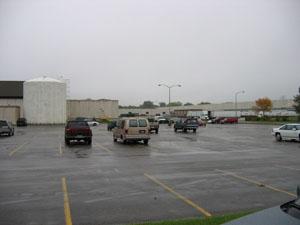 Boise Cascade/Onan Corp./Medtronics, Inc.The 183-acre Boise Cascade/Onan Corp./Medtronics, Inc. Superfund site is located in Fridley, Minnesota. From 1921 until 1961, a wood treatment facility operated on site. In the early 1960’s, Onan Corporation purchased 133 acres of the site, and Medtronic Corporation purchased the remaining 50 acres to build commercial and industrial manufacturing facilities. In 1979, site investigations found large quantities of toxic chemicals from past wood-treating operations in soil and groundwater. In 1984, EPA placed the site on the Superfund program’s National Priorities List (NPL). The site’s potentially responsible parties (PRPs) conducted cleanup. Cleanup activities included removing contaminated soil and filling the areas with clean soil, containing contaminated waste and soil that remained, collecting and treating contaminated groundwater, and collecting and disposing of thousands of gallons of oil. The PRPs completed cleanup activities in 1992. Medtronic constructed an office building and parking lot on the western portion of the site. Cummins, Inc. (formerly Onan Corporation) constructed an office building, manufacturing facility and parking lots on the eastern portion of the site. EPA removed the site from the NPL in 1995. In 1999, site workers identified contamination in soil on the Onan property during construction of the Murphy Warehouse building. The PRPs removed drums and contaminated soil from the area and monitored groundwater for two years. In 2009, investigations conducted by Cummins, Inc., prior to constructing a new Generator Test Cell Facility, identified soil contamination. After cleaning up the soil, Cummins, Inc. built the new facility, including the main building, parking, utility trenches and stormwater ponds. Groundwater monitoring continues at the site.
Boise Cascade/Onan Corp./Medtronics, Inc.The 183-acre Boise Cascade/Onan Corp./Medtronics, Inc. Superfund site is located in Fridley, Minnesota. From 1921 until 1961, a wood treatment facility operated on site. In the early 1960’s, Onan Corporation purchased 133 acres of the site, and Medtronic Corporation purchased the remaining 50 acres to build commercial and industrial manufacturing facilities. In 1979, site investigations found large quantities of toxic chemicals from past wood-treating operations in soil and groundwater. In 1984, EPA placed the site on the Superfund program’s National Priorities List (NPL). The site’s potentially responsible parties (PRPs) conducted cleanup. Cleanup activities included removing contaminated soil and filling the areas with clean soil, containing contaminated waste and soil that remained, collecting and treating contaminated groundwater, and collecting and disposing of thousands of gallons of oil. The PRPs completed cleanup activities in 1992. Medtronic constructed an office building and parking lot on the western portion of the site. Cummins, Inc. (formerly Onan Corporation) constructed an office building, manufacturing facility and parking lots on the eastern portion of the site. EPA removed the site from the NPL in 1995. In 1999, site workers identified contamination in soil on the Onan property during construction of the Murphy Warehouse building. The PRPs removed drums and contaminated soil from the area and monitored groundwater for two years. In 2009, investigations conducted by Cummins, Inc., prior to constructing a new Generator Test Cell Facility, identified soil contamination. After cleaning up the soil, Cummins, Inc. built the new facility, including the main building, parking, utility trenches and stormwater ponds. Groundwater monitoring continues at the site.
For more information:
East Bethel Demolition Landfill
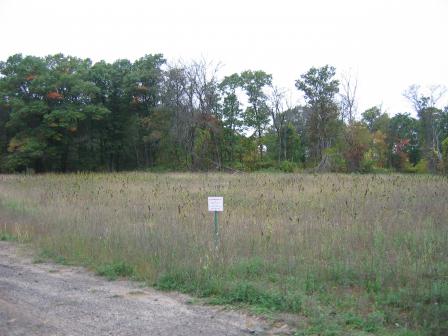 East Bethel Demolition LandfillThe 60-acre East Bethel Demolition Landfill Superfund site is located in East Bethel Township, Minnesota. The landfill area covers 27 acres of the site. The unpermitted landfill accepted demolition debris and other hazardous industrial wastes throughout the 1970s. In 1981, Anoka County identified high levels of contaminants and dissolved metals in the groundwater. EPA added the site to the Superfund program’s National Priorities List (NPL) in 1986. Cleanup actions, managed by the Minnesota Pollution Control Agency (MPCA)’s Closed Landfill Program, included the installation of a groundwater extraction and treatment system, a new landfill cap and active gas venting. EPA removed the site from the NPL in 1996. Currently, MPCA maintains the site. MPCA has planted native grasses on a portion of the site to enhance a wildlife habitat for sandhill cranes.
East Bethel Demolition LandfillThe 60-acre East Bethel Demolition Landfill Superfund site is located in East Bethel Township, Minnesota. The landfill area covers 27 acres of the site. The unpermitted landfill accepted demolition debris and other hazardous industrial wastes throughout the 1970s. In 1981, Anoka County identified high levels of contaminants and dissolved metals in the groundwater. EPA added the site to the Superfund program’s National Priorities List (NPL) in 1986. Cleanup actions, managed by the Minnesota Pollution Control Agency (MPCA)’s Closed Landfill Program, included the installation of a groundwater extraction and treatment system, a new landfill cap and active gas venting. EPA removed the site from the NPL in 1996. Currently, MPCA maintains the site. MPCA has planted native grasses on a portion of the site to enhance a wildlife habitat for sandhill cranes.
For more information:
FMC Corp. (Fridley Plant)
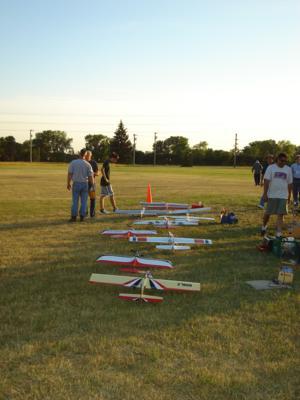 FMC Corp. (Fridley Plant)The 18-acre FMC Corp. (Fridley Plant) Superfund site is located in Anoka County, Minnesota. From the 1940s to 1969, operations at the site generated wastes. Site operators disposed of these wastes in an on-site dump. Sampling in the early 1980s found solvent contamination in groundwater, surface water and soil. EPA placed the site on the Superfund program’s National Priorities List (NPL) in 1983. Contaminated groundwater from the site migrated into the Mississippi River, affecting the Minneapolis drinking water system. EPA’s cleanup plan involved the excavation and storage of contaminated soil in an on-site vault and the pumping and transportation of contaminated groundwater to a nearby treatment plant. FMC Corporation (now BAE Systems Land and Armaments L. P. (BAE)) completed the majority of site cleanup activities by 1987. Groundwater monitoring continues to ensure the effectiveness of the cleanup. Part of the site is located within the River Road Industrial Center, also known as the BAE Facility. The 18-acre site includes 5 acres purchased by Burlington Northern Railroad in 1969 and a 13-acre area operated by BAE as open space and a containment and groundwater treatment facility. Using a partnership established with the Academy of Aeronautics (AMA) in 2005, EPA worked closely with the site owner and a local AMA club, the Minneapolis Piston Poppers, and allowed the club to use the site for aeromodeling. While the club no longer uses the site for activities, EPA ensured that the club could use the site safely. In 2005, Environmental Liability Transfer, Inc. purchased the BAE Facility including a portion of the site. In 2009, BAE installed a 14.7kW solar panel system at the site to generate electrical power for the site’s remedy. The solar panel system provides 30 percent of the electrical energy needed for the remediation system in the containment and groundwater treatment facility. This amount of energy produced per year would equate to enough power for four average-sized homes. The use of solar energy also prevents carbon dioxide from being produced and emitted into the air.
FMC Corp. (Fridley Plant)The 18-acre FMC Corp. (Fridley Plant) Superfund site is located in Anoka County, Minnesota. From the 1940s to 1969, operations at the site generated wastes. Site operators disposed of these wastes in an on-site dump. Sampling in the early 1980s found solvent contamination in groundwater, surface water and soil. EPA placed the site on the Superfund program’s National Priorities List (NPL) in 1983. Contaminated groundwater from the site migrated into the Mississippi River, affecting the Minneapolis drinking water system. EPA’s cleanup plan involved the excavation and storage of contaminated soil in an on-site vault and the pumping and transportation of contaminated groundwater to a nearby treatment plant. FMC Corporation (now BAE Systems Land and Armaments L. P. (BAE)) completed the majority of site cleanup activities by 1987. Groundwater monitoring continues to ensure the effectiveness of the cleanup. Part of the site is located within the River Road Industrial Center, also known as the BAE Facility. The 18-acre site includes 5 acres purchased by Burlington Northern Railroad in 1969 and a 13-acre area operated by BAE as open space and a containment and groundwater treatment facility. Using a partnership established with the Academy of Aeronautics (AMA) in 2005, EPA worked closely with the site owner and a local AMA club, the Minneapolis Piston Poppers, and allowed the club to use the site for aeromodeling. While the club no longer uses the site for activities, EPA ensured that the club could use the site safely. In 2005, Environmental Liability Transfer, Inc. purchased the BAE Facility including a portion of the site. In 2009, BAE installed a 14.7kW solar panel system at the site to generate electrical power for the site’s remedy. The solar panel system provides 30 percent of the electrical energy needed for the remediation system in the containment and groundwater treatment facility. This amount of energy produced per year would equate to enough power for four average-sized homes. The use of solar energy also prevents carbon dioxide from being produced and emitted into the air.
For more information:
Fridley Commons Park Well Field
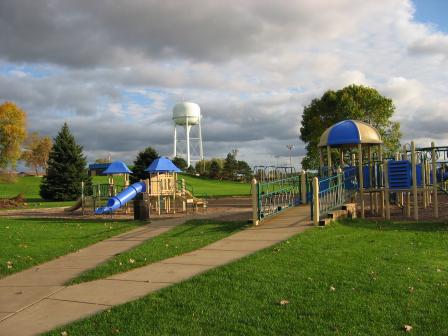 Fridley Commons Park Well FieldThe Fridley Commons Park Well Field Superfund site is located in Fridley, Minnesota. The site consists of an active 50-acre well field with eight public wells owned by the City of Fridley. In 1981, the City of Fridley identified contamination in groundwater samples from municipal wells when a program for measuring volatile organic compounds began. The City was unable to identify the source of the contamination. EPA added the site to the Superfund program’s National Priorities List (NPL) in 1999. Remedial activities included monitoring water for contamination and decommissioning the ninth well, where sampling showed the highest contamination. Since contaminant levels have improved over the years, the ninth well has returned to use. In addition to the active well field, Fridley Commons Park features three baseball fields, tennis courts, a sliding hill, an open field, a playground, a warming house and parking facilities.
Fridley Commons Park Well FieldThe Fridley Commons Park Well Field Superfund site is located in Fridley, Minnesota. The site consists of an active 50-acre well field with eight public wells owned by the City of Fridley. In 1981, the City of Fridley identified contamination in groundwater samples from municipal wells when a program for measuring volatile organic compounds began. The City was unable to identify the source of the contamination. EPA added the site to the Superfund program’s National Priorities List (NPL) in 1999. Remedial activities included monitoring water for contamination and decommissioning the ninth well, where sampling showed the highest contamination. Since contaminant levels have improved over the years, the ninth well has returned to use. In addition to the active well field, Fridley Commons Park features three baseball fields, tennis courts, a sliding hill, an open field, a playground, a warming house and parking facilities.
For more information:
General Mills/Henkel Corp.
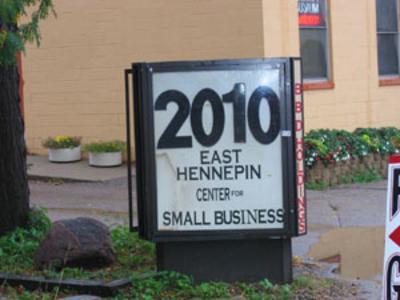 General Mills/Henkel Corp.A private investment group purchased the General Mills/Henkel Corp. Superfund site and worked to transform the formerly contaminated site into a business incubator enterprise development program to support over 130 start-up businesses. For more than 45 years, General Mills operated a technical research facility on the 6.5-acre site in downtown Minneapolis, Minnesota. The facility discharged about 1,000 gallons of laboratory chemicals each year directly into an on-site pit. The chemicals contaminated soil and groundwater at the site. In 1984, EPA placed the site on the Superfund program’s National Priorities List (NPL). EPA delegated authority to the Minnesota Pollution Control Agency (MPCA) to oversee site cleanup activities. The site’s potentially responsible party (PRP) conducted cleanup activities, including groundwater treatment and long-term monitoring, under MPCA’s oversight. BBD Holdings, Inc., a private investment group, purchased the site in 1989 and converted the existing buildings into a business area that supports the startup and growth of local small businesses. This business development program continues to play a significant role in the community's development by providing business opportunities to local residents and attracting other entrepreneurs and families to the area. A variety of businesses currently operate at the site. An extensive program of vapor intrusion mitigation and long-term groundwater monitoring are ongoing.
General Mills/Henkel Corp.A private investment group purchased the General Mills/Henkel Corp. Superfund site and worked to transform the formerly contaminated site into a business incubator enterprise development program to support over 130 start-up businesses. For more than 45 years, General Mills operated a technical research facility on the 6.5-acre site in downtown Minneapolis, Minnesota. The facility discharged about 1,000 gallons of laboratory chemicals each year directly into an on-site pit. The chemicals contaminated soil and groundwater at the site. In 1984, EPA placed the site on the Superfund program’s National Priorities List (NPL). EPA delegated authority to the Minnesota Pollution Control Agency (MPCA) to oversee site cleanup activities. The site’s potentially responsible party (PRP) conducted cleanup activities, including groundwater treatment and long-term monitoring, under MPCA’s oversight. BBD Holdings, Inc., a private investment group, purchased the site in 1989 and converted the existing buildings into a business area that supports the startup and growth of local small businesses. This business development program continues to play a significant role in the community's development by providing business opportunities to local residents and attracting other entrepreneurs and families to the area. A variety of businesses currently operate at the site. An extensive program of vapor intrusion mitigation and long-term groundwater monitoring are ongoing.
For more information:
- Reuse and the Benefit to Community: General Mills/Henkel Corp. Case Study (2014) (PDF) (11 pp, 877 K, About PDF)
- Superfund Site Profile Page
Joslyn Manufacturing & Supply Co.
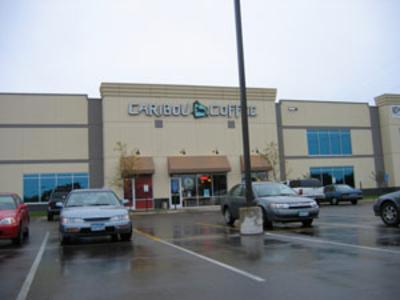 Joslyn Manufacturing & Supply Co.Beginning in the 1920s and ending in 1980, a succession of companies operated a wood-treating facility on the 30-acre Joslyn Manufacturing & Supply Co. Superfund site in Brooklyn Center, Minnesota. The companies placed wastes in waste disposal ponds, buried sludge on site and spilled wood-treating solutions onto the ground. These practices contaminated site soil and groundwater. EPA placed the site on the Superfund program’s National Priorities List (NPL) in 1984. EPA allowed the Minnesota Pollution Control Agency (MPCA) to oversee site cleanup activities. Site cleanup began in 1988. Cleanup activities included removing, treating and disposing of contaminated soil. The cleanup plan also includes treating groundwater and removing dense non-aqueous-phase liquids from the site. An investigation and feasibility study for an additional area of soil contamination is ongoing at the site. EPA, state agencies and Real Estate Recycling (RER), a redevelopment company specializing in previously-contaminated land, worked together to make redevelopment a possibility at the site. RER purchased the site, continued cleanup and then redeveloped the site into the Twin Lakes Business Park. RER recognized that the property’s size, valuable infrastructure, direct access to highways and the strength of Brooklyn Center’s labor force would allow for successful reuse. In 2002, EPA deleted the redeveloped portion of the site from the NPL. Today, the fully leased business park provides 421,000 square feet of commercial and industrial space for a variety of tenants.
Joslyn Manufacturing & Supply Co.Beginning in the 1920s and ending in 1980, a succession of companies operated a wood-treating facility on the 30-acre Joslyn Manufacturing & Supply Co. Superfund site in Brooklyn Center, Minnesota. The companies placed wastes in waste disposal ponds, buried sludge on site and spilled wood-treating solutions onto the ground. These practices contaminated site soil and groundwater. EPA placed the site on the Superfund program’s National Priorities List (NPL) in 1984. EPA allowed the Minnesota Pollution Control Agency (MPCA) to oversee site cleanup activities. Site cleanup began in 1988. Cleanup activities included removing, treating and disposing of contaminated soil. The cleanup plan also includes treating groundwater and removing dense non-aqueous-phase liquids from the site. An investigation and feasibility study for an additional area of soil contamination is ongoing at the site. EPA, state agencies and Real Estate Recycling (RER), a redevelopment company specializing in previously-contaminated land, worked together to make redevelopment a possibility at the site. RER purchased the site, continued cleanup and then redeveloped the site into the Twin Lakes Business Park. RER recognized that the property’s size, valuable infrastructure, direct access to highways and the strength of Brooklyn Center’s labor force would allow for successful reuse. In 2002, EPA deleted the redeveloped portion of the site from the NPL. Today, the fully leased business park provides 421,000 square feet of commercial and industrial space for a variety of tenants.
For more information:
- Reuse and the Benefit to Community: Joslyn Manufacturing & Supply Co. Case Study (2012) (PDF) (10 pp, 925 K, About PDF)
- Superfund Site Profile Page
Koch Refining Co./N-Ren Corp.
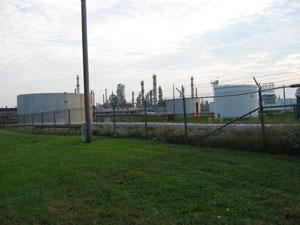 Koch Refining Co./N-Ren Corp.The Koch Refining Co./N-Ren Corp. Superfund site is an active oil refinery in Rosemount, Minnesota. The site covers 1,200 acres and includes the refinery and neighboring property. Operations began in 1955. The refinery receives crude oil by pipeline and barge and then refines the crude oil into gasoline, jet fuel, heating oil, kerosene, diesel fuel, boiler fuel, asphalt, petroleum coke, sulfur, carbon dioxide, butane and propane. Since the early 1970s, spills in the storage tank area have occurred. Site investigations identified groundwater contamination. In 1986, EPA placed the site on the Superfund program’s National Priorities List (NPL). Cleanup activities occurred from 1988 until 2004. Cleanup involved installation of recovery wells, groundwater gradient control, and soil gas extraction. Further site studies classified the site as a petroleum release site so EPA transferred the site responsibility to the Minnesota Tanks and Spills Program. EPA deleted the site from the NPL in 1995. It became a state-lead site under the Resource Conservation and Recovery Act (RCRA) program and the Underground Storage Tank (UST) program. Groundwater monitoring is ongoing at the site.
Koch Refining Co./N-Ren Corp.The Koch Refining Co./N-Ren Corp. Superfund site is an active oil refinery in Rosemount, Minnesota. The site covers 1,200 acres and includes the refinery and neighboring property. Operations began in 1955. The refinery receives crude oil by pipeline and barge and then refines the crude oil into gasoline, jet fuel, heating oil, kerosene, diesel fuel, boiler fuel, asphalt, petroleum coke, sulfur, carbon dioxide, butane and propane. Since the early 1970s, spills in the storage tank area have occurred. Site investigations identified groundwater contamination. In 1986, EPA placed the site on the Superfund program’s National Priorities List (NPL). Cleanup activities occurred from 1988 until 2004. Cleanup involved installation of recovery wells, groundwater gradient control, and soil gas extraction. Further site studies classified the site as a petroleum release site so EPA transferred the site responsibility to the Minnesota Tanks and Spills Program. EPA deleted the site from the NPL in 1995. It became a state-lead site under the Resource Conservation and Recovery Act (RCRA) program and the Underground Storage Tank (UST) program. Groundwater monitoring is ongoing at the site.
For more information:
Koppers Coke
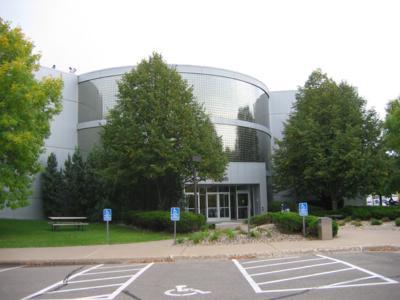 Koppers CokeThe 38-acre Koppers Coke Superfund site is located in Saint Paul, Minnesota. From 1917 to 1979, the Koppers Company produced foundry coke and various by-products, such as coal tars and coal tar distillates. Storage and disposal practices, as well as various leaks and spills, resulted in the contamination of soil and groundwater at the site. In 1983, EPA placed the site on the Superfund program’s National Priorities List (NPL). EPA delegated cleanup authority to the Minnesota Pollution Control Agency (MPCA). As part of the cleanup, MPCA required the Koppers Company to dispose of residue in an off-site facility and remove and dispose of contaminated soil. Groundwater treatment and monitoring continues at the site today. The site’s location next to major ongoing industrial and commercial development and its proximity to transportation infrastructure spurred the Saint Paul Port Authority to clean up the site for redevelopment. The Saint Paul Port Authority redeveloped the site into part of a 218-acre, high-tech industrial park called Energy Park. Energy Park, established in 1980, includes manufacturers, commercial and office space, and residential housing. Midway Stadium is located within Energy Park, as is the Dakota Bar & Grill, which is a well-known nightly jazz spot. U.S. Bancorp, one of the major tenants, maintains a large office complex on the site property. In 2012, the businesses on the site’s portion of Energy Park employed about 1,667 people and provided an estimated $119 million in annual income to employees.
Koppers CokeThe 38-acre Koppers Coke Superfund site is located in Saint Paul, Minnesota. From 1917 to 1979, the Koppers Company produced foundry coke and various by-products, such as coal tars and coal tar distillates. Storage and disposal practices, as well as various leaks and spills, resulted in the contamination of soil and groundwater at the site. In 1983, EPA placed the site on the Superfund program’s National Priorities List (NPL). EPA delegated cleanup authority to the Minnesota Pollution Control Agency (MPCA). As part of the cleanup, MPCA required the Koppers Company to dispose of residue in an off-site facility and remove and dispose of contaminated soil. Groundwater treatment and monitoring continues at the site today. The site’s location next to major ongoing industrial and commercial development and its proximity to transportation infrastructure spurred the Saint Paul Port Authority to clean up the site for redevelopment. The Saint Paul Port Authority redeveloped the site into part of a 218-acre, high-tech industrial park called Energy Park. Energy Park, established in 1980, includes manufacturers, commercial and office space, and residential housing. Midway Stadium is located within Energy Park, as is the Dakota Bar & Grill, which is a well-known nightly jazz spot. U.S. Bancorp, one of the major tenants, maintains a large office complex on the site property. In 2012, the businesses on the site’s portion of Energy Park employed about 1,667 people and provided an estimated $119 million in annual income to employees.
For more information:
- Reuse and the Benefit to Community: Koppers Coke Case Study (2012) (PDF) (10 pp, 612 K, About PDF)
- Superfund Site Profile Page
Kurt Manufacturing Co.
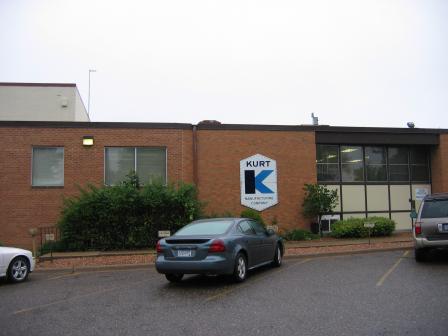 Kurt Manufacturing Co.The Kurt Manufacturing Co. Superfund site occupied 10 acres in Fridley, Minnesota. Since 1960, Kurt Manufacturing has been making machining and metal components on site. Site operators spilled industrial solvent into a drainage pit beneath the company’s metal shavings bin storage. This spill contaminated soil and groundwater below the site. EPA added the site to the Superfund program’s National Priorities List (NPL) in 1986. Cleanup activities include treating contaminated groundwater as well as removing and treating contaminated soil. EPA also required land use controls to limit access to groundwater and soils at the site. Kurt Manufacturing continues to operate a precision machining and metal fabrication facility on site.
Kurt Manufacturing Co.The Kurt Manufacturing Co. Superfund site occupied 10 acres in Fridley, Minnesota. Since 1960, Kurt Manufacturing has been making machining and metal components on site. Site operators spilled industrial solvent into a drainage pit beneath the company’s metal shavings bin storage. This spill contaminated soil and groundwater below the site. EPA added the site to the Superfund program’s National Priorities List (NPL) in 1986. Cleanup activities include treating contaminated groundwater as well as removing and treating contaminated soil. EPA also required land use controls to limit access to groundwater and soils at the site. Kurt Manufacturing continues to operate a precision machining and metal fabrication facility on site.
For more information:
LaGrand Sanitary Landfill
The LaGrand Sanitary Landfill Superfund site is located in LaGrand Township, Minnesota. Although the landfill itself only spans 5 acres, the entire site covers 70 acres. Between 1974 and 1984, the landfill accepted municipal and industrial wastes. Landfill wastes contaminated groundwater below the landfill. The Minnesota Pollution Control Agency (MPCA) addressed the site through the state’s Closed Landfill Program. EPA added the site to the Superfund program’s National Priorities List (NPL) in 1987. Cleanup began in 1992. Workers conducted long-term groundwater monitoring, landfill gas venting and landfill cover maintenance. EPA deleted the site from the NPL in 1997. In 2006, MPCA installed a new landfill cap and new gas vents. In 2008, MPCA transferred a 3-acre part of the site property to Runestone Electric for reuse as an electric substation. In 2009, MPCA granted an easement to Great River Energy, an electrical company serving Minnesota and Wisconsin, to construct electrical power transmission lines through part of the site. In 2013, MPCA developed a Closed Landfill Use Plan for the property and transmitted it to Douglas County. The plan outlines MPCA’s current use of the property as a closed landfill and a potential added future use as a solar farm.
For more information:
MacGillis & Gibbs Co./Bell Lumber & Pole Co.
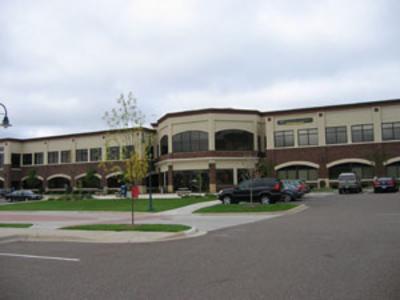 MacGillis & Gibbs Co./Bell Lumber & Pole Co.The 68-acre MacGillis & Gibbs Co./Bell Lumber & Pole Co. Superfund site consists of two adjoining properties in New Brighton, Minnesota. Wood preserving facilities operated on both properties through most of the 20th century. EPA added the site to the Superfund program’s National Priorities List (NPL) in 1984, after the discovery of contaminated soil and groundwater. Cleanup activities included stabilization and removal of contaminated soil, bio-treatment of contaminated soil, installation of a cap over heavily contaminated soils, and installation and operation of a groundwater pump-and-treat system. By 2001, the majority of cleanup operations were complete. Since the mid-1980s, the City had been laying the groundwork necessary to redevelop the 25-acre MacGillis & Gibbs property. This effort is part of the City of New Brighton’s plan to revitalize a historic road that was once a main route through the Twin Cities of Saint Paul and Minneapolis. In 1997, the City, along with state and federal agencies, successfully negotiated a Prospective Purchaser Agreement to resolve the City’s liability concerns about obtaining the property. The site’s successful cleanup resulted in the development of the 32-acre New Brighton Corporate Park III. Today, the site redevelopment includes manufacturing and distribution businesses, as well as over 70,000 square feet of commercial office space, a range of retail shops and restaurants, legal and medical services, a post office and an adjacent 120-unit condominium development.
MacGillis & Gibbs Co./Bell Lumber & Pole Co.The 68-acre MacGillis & Gibbs Co./Bell Lumber & Pole Co. Superfund site consists of two adjoining properties in New Brighton, Minnesota. Wood preserving facilities operated on both properties through most of the 20th century. EPA added the site to the Superfund program’s National Priorities List (NPL) in 1984, after the discovery of contaminated soil and groundwater. Cleanup activities included stabilization and removal of contaminated soil, bio-treatment of contaminated soil, installation of a cap over heavily contaminated soils, and installation and operation of a groundwater pump-and-treat system. By 2001, the majority of cleanup operations were complete. Since the mid-1980s, the City had been laying the groundwork necessary to redevelop the 25-acre MacGillis & Gibbs property. This effort is part of the City of New Brighton’s plan to revitalize a historic road that was once a main route through the Twin Cities of Saint Paul and Minneapolis. In 1997, the City, along with state and federal agencies, successfully negotiated a Prospective Purchaser Agreement to resolve the City’s liability concerns about obtaining the property. The site’s successful cleanup resulted in the development of the 32-acre New Brighton Corporate Park III. Today, the site redevelopment includes manufacturing and distribution businesses, as well as over 70,000 square feet of commercial office space, a range of retail shops and restaurants, legal and medical services, a post office and an adjacent 120-unit condominium development.
For more information:
- MacGillis & Gibbs Reuse Case Study (PDF) (14 pp, 844 K)
- Redevelopment of the MacGillis & Gibbs/Bell Lumber & Pole Superfund Site (PDF)(1 pg, 80 K, About PDF)
- Cleanup and Mixed-Use Revitalization in the Twin Cities: The MacGillis & Gibbs Superfund Site Property and New Brighton, Minnesota (PDF) (14 pp, 844 K)
- Video: MacGillis and Gibbs: A Shining Future for the City of New Brighton Exit
- Superfund Site Profile Page
Morris Arsenic Dump
The Morris Arsenic Dump Superfund site is located in Morris, Minnesota. In the early 1940s, Stevens County buried surplus arsenic-based pesticide in a gravel pit on site. The Minnesota Department of Transportation built a highway through the gravel pit in 1978. After inconclusive groundwater and soil testing, the Minnesota Pollution Control Agency requested assistance from EPA. EPA found traces of arsenic in groundwater samples and added the site to the Superfund program’s National Priorities List (NPL) in 1984. Further testing was unable to determine whether the arsenic in the groundwater came from buried pesticides or from arsenic naturally found in the Minnesota region. Since tested arsenic concentrations fell within the naturally occurring arsenic level range, EPA deleted the site from the NPL in 1986. Part of U.S. Highway 59 remains in use on the site.
For more information:
Naval Industrial Reserve Ordnance Plant
The 83-acre Naval Industrial Reserve Ordnance Plant (NIROP) Superfund site is near the Mississippi River in Fridley, Minnesota. Starting in 1940, the U.S. Navy and its contractors produced advanced weapons systems on site. During the long history of industrial operation at the site, operators leaked, spilled and disposed of contamination. In 1981, Minnesota Pollution Control Agency (MPCA) discovered contamination in on-site groundwater wells and in the City of Minneapolis’ drinking water treatment plant intake pipe. In 1983, the Navy conducted an investigation of soils and removed contaminated soil and drums of waste material. EPA added the site to the Superfund program’s National Priorities List (NPL) in November 1989. In 1990, EPA selected the remedy of pumping and treating groundwater to remove contamination, then discharging the cleaned water into the Mississippi River. Since installing the groundwater pump-and-treat system in 1991, the Navy conducted investigations, removed additional waste materials and installed additional extraction wells. EPA and MPCA continue to monitor groundwater annually. A private developer purchased the site along with surrounding properties in March 2012, and plans to build a business park in four phases. The planned industrial offices and retail space would occupy about 122 acres. The developer completed construction of Phase 1 of the Northern Stacks industrial park in late 2014. Current tenants of the industrial park include BAE Systems, OnTrac International Mail, Kaufman Container and Lindenmeyr Munroe. The groundbreaking for construction of Phase 2 of the Northern Stacks industrial park took place in Summer 2016.
For more information:
- Superfund Site Profile Page
- Redevelopment of the Naval Industrial Reserve Ordinance Plant Superfund Site (PDF)(1 pg, 473 K)
NL Industries/Taracorp/Golden Auto
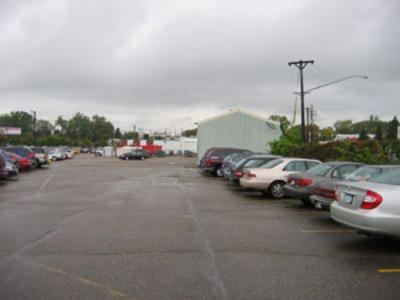 NL Industries/Taracorp/Golden AutoThe NL Industries/Taracorp/Golden Auto Superfund site is located in St. Louis Park, Minnesota. A secondary smelter operated on site from 1940 until 1982, recovering lead from lead plates, battery fragments and lead containers. The waste disposal activities at the smelter and the metal refining business resulted in high lead levels in the air, soil and groundwater. In 1983, EPA placed the site on the Superfund program’s National Priorities List (NPL). Cleanup involved removing contaminated soil, refilling and revegetating the area, cleaning or demolishing buildings, and installing a protective asphalt cover. Restrictions limited access to the area during cleanup. EPA deleted the site from the NPL in 1998, but groundwater monitoring continues. In 2009, EPA determined that the site met the requirements for Site-Wide Ready for Anticipated Use, opening the door to site reuse. Real Estate Recycling and its development subsidiary, Highway 7 Business Center LLC, currently own the site. Today, the site is home to the Highway 7 Business Center, which consists of an industrial/commercial office/warehouse building with associated parking, drive and green space areas.
NL Industries/Taracorp/Golden AutoThe NL Industries/Taracorp/Golden Auto Superfund site is located in St. Louis Park, Minnesota. A secondary smelter operated on site from 1940 until 1982, recovering lead from lead plates, battery fragments and lead containers. The waste disposal activities at the smelter and the metal refining business resulted in high lead levels in the air, soil and groundwater. In 1983, EPA placed the site on the Superfund program’s National Priorities List (NPL). Cleanup involved removing contaminated soil, refilling and revegetating the area, cleaning or demolishing buildings, and installing a protective asphalt cover. Restrictions limited access to the area during cleanup. EPA deleted the site from the NPL in 1998, but groundwater monitoring continues. In 2009, EPA determined that the site met the requirements for Site-Wide Ready for Anticipated Use, opening the door to site reuse. Real Estate Recycling and its development subsidiary, Highway 7 Business Center LLC, currently own the site. Today, the site is home to the Highway 7 Business Center, which consists of an industrial/commercial office/warehouse building with associated parking, drive and green space areas.
For more information:
Nutting Truck & Caster Co.
The 8.6-acre Nutting Truck & Caster Co. Superfund site is located in Faribault, Minnesota. Between 1891 and 1984, Nutting Truck & Caster Co. manufactured and distributed casters, wheels, hand trucks and towline trucks at the site. From 1959 until 1979, the company operated the site as a foundry waste disposal area, using a seepage pit for disposal of waste and sludges. Soil sampling indicated contamination of surface soil at the site. In 1980, the company removed waste materials and contaminated soil from the pit and then backfilled and paved the area. In 1984, the company ended its operations at the site. In the same year, EPA placed the site on the Superfund program’s National Priorities List (NPL). EPA delegated authority to the Minnesota Pollution Control Agency to oversee site cleanup activities. Further site investigations identified groundwater contamination resulting from former disposal practices. Cleanup activities included the construction of a groundwater extraction and treatment system, which operated until 2004. Prairie Avenue Leasing Ltd. currently owns the site and leases it for commercial and light industrial purposes. Groundwater monitoring continues at the site.
For more information:
Oakdale Dump
The Oakdale Dump Superfund site is located in Oakdale, Minnesota. Three separate properties make up the site: the 55-acre Abresch property, the 5-acre Brockman property and the 2-acre Eberle property. In the 1940s and 1950s, industrial and non-industrial waste dumping occurred at the three properties. In 1980, a Minnesota Pollution Control Agency investigation identified contamination in the soil of the three properties. EPA added the site to the Superfund program’s National Properties List (NPL) in 1983. Cleanup activities included the removal of contaminated soil and waste, treatment of soil, and collection and off-site treatment of contaminated water. Cleanup activities also include the monitoring of groundwater to detect changes in groundwater quality. Commercial use and a wooded vacant lot make up the Brockman property. The Eberle property consists of a city park.
For more information:
Olmsted County Sanitary Landfill
The Olmsted County Sanitary Landfill Superfund site is located in Oronoco, Minnesota. The City of Rochester owned and operated the 50-acre site from 1972 until 1984 when the County of Olmstead purchased the property. The landfill accepted various industrial wastes, including electroplating sludge, asbestos, transformers, paint and solvents. Seeps from the landfill resulted in groundwater contamination at the site. Also, an intermittent stream at the site carried contaminants during heavy rains. EPA placed the site on the Superfund program’s National Priorities List (NPL) in 1986. The County performed site investigations from 1989 to 1993 under Minnesota Pollution Control Agency (MPCA) oversight. In 1994, the County capped the landfill and installed a leachate collection system. MPCA’s Closed Landfill Program adequately addressed the site risks. EPA deleted the site from the NPL in 1995. In 2008, a local model aeronautics club began using the site as an area to fly model airplanes.
For more information:
Perham Arsenic Site
The Perham Arsenic Site Superfund site is located in Perham, Minnesota. From the 1930s until 1947, manufacture of an arsenic pesticide to control grasshoppers that threatened crops throughout the Midwest occurred on the site. Site disposal practices contaminated groundwater. In 1971, Hammers Construction Company purchased the property to build offices and a warehouse. The company installed a groundwater well to provide water to the facility. Eleven employees suffered from arsenic poisoning after drinking the contaminated groundwater. In response to this discovery, the City of Perham extended its municipal water supply to the facility and capped the well. The cleanup response included building a clay cap over the pit where arsenic pesticide was buried and installing a groundwater treatment system. The City supplied water to a nearby school and residence. New land use controls protect human health and safety. During cleanup activities, the Hammers Construction Company offices, as well as on-site fairground properties, continue to support commercial and recreational uses of the site, respectively. Hammers Rental Properties currently owns the eastern portion of the property. Knuttila Financial Services owns the western portion of the property. EPA classified the site as Sitewide Ready for Anticipated Use (SWRAU) in 2010.
For more information:
Pine Bend Sanitary Landfill
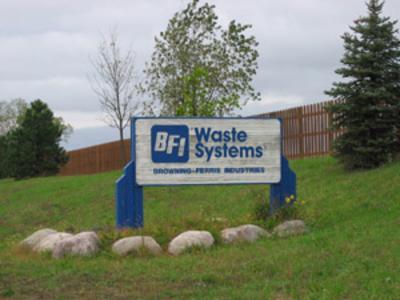 Pine Bend Sanitary LandfillThe 255-acre Pine Bend Sanitary Landfill Superfund site is located in Inver Grove Heights, Minnesota. The site includes the largest open landfill in Minnesota, which opened in 1971. The landfill continues to operate on a portion of the site as a solid waste facility. Investigations identified groundwater contamination at the site and in several private wells. This contamination resulted from leachate migrating from the landfill. EPA placed the site on the Superfund program’s National Priorities List (NPL) in 1986. The site’s potentially responsible party (PRP) connected all residents to the public water supply and permanently sealed and abandoned private wells. The PRP has also installed a low permeability cover, a landfill gas collection system and a surface water and leachate collection system. EPA deleted the site from the NPL in 1998. A landfill gas collection system actively channels landfill gases to the site’s gas-to-energy production plant. The landfill continues to operate as a municipal solid waste facility in accordance with permit requirements.
Pine Bend Sanitary LandfillThe 255-acre Pine Bend Sanitary Landfill Superfund site is located in Inver Grove Heights, Minnesota. The site includes the largest open landfill in Minnesota, which opened in 1971. The landfill continues to operate on a portion of the site as a solid waste facility. Investigations identified groundwater contamination at the site and in several private wells. This contamination resulted from leachate migrating from the landfill. EPA placed the site on the Superfund program’s National Priorities List (NPL) in 1986. The site’s potentially responsible party (PRP) connected all residents to the public water supply and permanently sealed and abandoned private wells. The PRP has also installed a low permeability cover, a landfill gas collection system and a surface water and leachate collection system. EPA deleted the site from the NPL in 1998. A landfill gas collection system actively channels landfill gases to the site’s gas-to-energy production plant. The landfill continues to operate as a municipal solid waste facility in accordance with permit requirements.
For more information:
Reilly Tar & Chemical Corp. (St. Louis Park Unit)
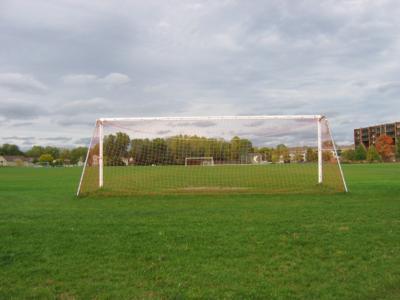 Reilly Tar & Chemical Corp. (St. Louis Park Plant)The 80-acre Reilly Tar & Chemical Corp. (St. Louis Park Plant) Superfund site is located in St. Louis Park, Minnesota. From 1917 to 1982, a coal tar distillation and wood-preserving facility operated on site. Wastewater handling practices resulted in soil and groundwater contamination at the site. In 1972, site owners sold the site and residential and recreational redevelopment began. In 1983, EPA placed the site on the Superfund program’s National Priorities List (NPL). EPA, the state and the site’s potentially responsible party (PRP) conducted cleanup activities. A responsible party addressed contamination in two on-site storage wells and filled an affected wetland. They also installed groundwater extraction and treatment systems for several aquifers and installed treatment systems for affect City drinking water wells. Since completing investigation activities for the source area, most of the site has operated as a city park. The City of St. Louis Park completed a major improvement project at the park in 2002. In 2003, the City added a new soil cover over the ball fields at the Louisiana Oaks Park on site. Rental condominium and apartment complexes, as well as commercial businesses, are located at the site. Parties completed construction of a commercial building and a road improvement project in 2004. Additional road improvement projects have occurred since that time, including a major improvement to Highway 7. Currently, the City of St. Louis Park operates and maintains groundwater pumping and treatment systems and monitors groundwater quality.
Reilly Tar & Chemical Corp. (St. Louis Park Plant)The 80-acre Reilly Tar & Chemical Corp. (St. Louis Park Plant) Superfund site is located in St. Louis Park, Minnesota. From 1917 to 1982, a coal tar distillation and wood-preserving facility operated on site. Wastewater handling practices resulted in soil and groundwater contamination at the site. In 1972, site owners sold the site and residential and recreational redevelopment began. In 1983, EPA placed the site on the Superfund program’s National Priorities List (NPL). EPA, the state and the site’s potentially responsible party (PRP) conducted cleanup activities. A responsible party addressed contamination in two on-site storage wells and filled an affected wetland. They also installed groundwater extraction and treatment systems for several aquifers and installed treatment systems for affect City drinking water wells. Since completing investigation activities for the source area, most of the site has operated as a city park. The City of St. Louis Park completed a major improvement project at the park in 2002. In 2003, the City added a new soil cover over the ball fields at the Louisiana Oaks Park on site. Rental condominium and apartment complexes, as well as commercial businesses, are located at the site. Parties completed construction of a commercial building and a road improvement project in 2004. Additional road improvement projects have occurred since that time, including a major improvement to Highway 7. Currently, the City of St. Louis Park operates and maintains groundwater pumping and treatment systems and monitors groundwater quality.
For more information:
South Andover Site
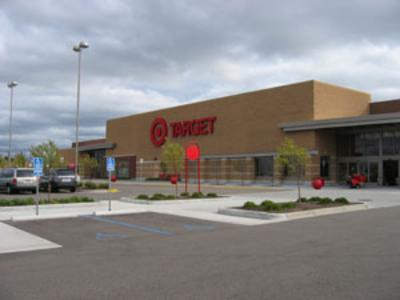 South Andover SiteThe 50-acre South Andover Site Superfund site is located in Andover, Minnesota. From 1954 until 1981, the site operated as waste disposal and salvage facilities. Spills and practices on site resulted in the contamination of soils and groundwater. EPA placed the site on the National Priorities List (NPL) in 1983. Cleanup activities included soil removal, treatment or off-site disposal. The potentially responsible parties completed cleanup activities in 1994. Groundwater monitoring continues. In 1996 and 1997, the City of Andover bought the site and began redevelopment. New residential use and commercial businesses extend onto neighboring properties. The majority of this area is known as Andover Station. Redevelopment supports over 500 jobs annually and contributes $9.9 million in annual employment income to the community. The pedestrian-oriented development fosters a more walkable and livable community. It also attracts shoppers and boosts the local tax base.
South Andover SiteThe 50-acre South Andover Site Superfund site is located in Andover, Minnesota. From 1954 until 1981, the site operated as waste disposal and salvage facilities. Spills and practices on site resulted in the contamination of soils and groundwater. EPA placed the site on the National Priorities List (NPL) in 1983. Cleanup activities included soil removal, treatment or off-site disposal. The potentially responsible parties completed cleanup activities in 1994. Groundwater monitoring continues. In 1996 and 1997, the City of Andover bought the site and began redevelopment. New residential use and commercial businesses extend onto neighboring properties. The majority of this area is known as Andover Station. Redevelopment supports over 500 jobs annually and contributes $9.9 million in annual employment income to the community. The pedestrian-oriented development fosters a more walkable and livable community. It also attracts shoppers and boosts the local tax base.
For more information:
- Reuse and the Benefit to Community: South Andover Case Study (2011) (PDF) (11 pp, 398 K, About PDF)
- Superfund Site Profile Page
South Minneapolis Residential Soil Contamination Site
The South Minneapolis Residential Soil Contamination Superfund site is located in Minneapolis, Minnesota. The 1,480-acre site includes 3,500 residential properties as well as commercial, municipal and industrial areas. From 1938 to 1963, Reade Manufacturing operated an arsenic-based pesticide manufacturing facility at the site. In the manufacturing process, toxic arsenic became airborne and contaminated soils of surrounding residential neighborhoods. EPA added the site to the Superfund program’s National Priorities List (NPL) in 2006. In 2009, EPA received funding through the American Reinvestment and Recovery Act (ARRA). The federal government provided these funds to conduct cleanup work at the site. Cleanup activities included the excavation of contaminated soil and restoration of more than 600 properties in ethnically and economically diverse neighborhoods. A commercial and light industrial facility currently operates on the property. Commercial businesses and homes in the area remain in use.
For more information:
St. Louis River Site
The 755-acre St. Louis River National Priorities List (NPL) Superfund site consists of two State Superfund sites: the St. Louis River/Interlake/Duluth Tar site (SLRIDT) and the U.S. Steel site. The sites are located near Duluth, Minnesota, along the St. Louis River. Industrial operations occurred at the SLRIDT site as early as the 1890s, with iron companies operating on site since 1904. Until 1948, tar and chemical companies manufactured substances from iron production by-products at the SLRIDT site. U.S Steel operated manufacturing facilities from 1915 until 1979. Past operations and improper waste disposal practices at both sites contaminated soils, sediments and groundwater. Site operations also contaminated the St. Louis River, an estuary with abundant wildlife and fisheries. EPA added the site to the Superfund program’s National Priorities List (NPL) in 1984 and delegated authority for site management to the Minnesota Pollution Control Agency (MPCA). Cleanup activities at SLRIDT included tar and soil removal, and dredging and capping of contaminated river sediments in Stryker Bay Slip 6 and Slip 7. In addition, reconstructed wetland habitats help fish productivity and health. Cleanup activities at the U.S. Steel site include building demolition, and removal and solidification of tar and contaminated soil. Duluth Port Authority has expressed an interest in developing a 120-acre light industrial park at the site. MPCA is assisting in the development of a fast-tracked investigation and cleanup plan for this area. EPA, U.S. Steel, and MPCA are working to conduct a large sediment cleanup and beneficial use improvement for Spirit Lake. The lake is a portion of the St. Louis River of significant importance to area Tribes.
For more information:
Union Scrap Iron & Metal Co.
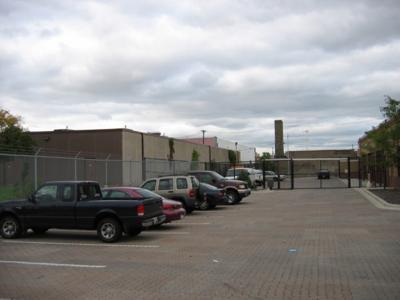 Union Scrap Iron & Metal Co.The Union Scrap Iron & Metal Co. Superfund site is a 10,000-square foot area located in Minneapolis, Minnesota. Battery recycling operations took place at the site from the early 1970s until 1983. Site operations and disposal practices resulted in contaminated wastes and soil. EPA added the site to the Superfund program’s National Priorities List (NPL) in 1984. From 1987 to 1989, EPA conducted emergency cleanup activities at the site to remove wastes, battery debris and contaminated soil from the site and to replace excavated areas with clean fill. EPA decontaminated and demolished on-site buildings and removed contaminated material from the sewer lines. EPA deleted the site from the NPL in 1991. Today, the site is part of the North Washington Industrial Park and commercial businesses use the site as a parking area.
Union Scrap Iron & Metal Co.The Union Scrap Iron & Metal Co. Superfund site is a 10,000-square foot area located in Minneapolis, Minnesota. Battery recycling operations took place at the site from the early 1970s until 1983. Site operations and disposal practices resulted in contaminated wastes and soil. EPA added the site to the Superfund program’s National Priorities List (NPL) in 1984. From 1987 to 1989, EPA conducted emergency cleanup activities at the site to remove wastes, battery debris and contaminated soil from the site and to replace excavated areas with clean fill. EPA decontaminated and demolished on-site buildings and removed contaminated material from the sewer lines. EPA deleted the site from the NPL in 1991. Today, the site is part of the North Washington Industrial Park and commercial businesses use the site as a parking area.
For more information:
Waite Park Wells
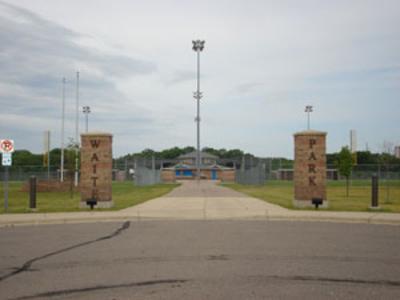 Waite Park WellsThe 200-acre Waite Park Wells Superfund site is located in the City of Waite Park, Minnesota. The site includes three sites: Waite Park Wells; Electric Machinery; and Burlington Northern Car Shop. Site operations resulted in soil and groundwater contamination from waste disposal practices. In 1986, EPA added the site to the Superfund program’s National Priorities List (NPL). EPA delegated cleanup of the sites to the Minnesota Pollution Control Agency. Cleanup activities at the Waite Park Wells site included construction of a treatment facility for the City of Waite Park municipal drinking water. Cleanup activities at the Electric Machinery site included groundwater extraction and treatment, soil vapor removal, and long-term groundwater monitoring. Cleanup activities at the Burlington Northern Car Shop site included removal of lagoon and sandblast wastes, and construction of an on-site containment facility. After the cleanup, Burlington Northern transferred ownership of 126 acres of the site to the City of Waite Park. The City has transformed part of the area into the 42.1-acre River’s Edge Park. The park features baseball and softball fields, a batting cage, ice hockey and figure skating rinks, picnic tables, a concession stand, fishing access on the Sauk River and parking. Redevelopment has taken place at another section of the site that now includes a warehouse, restaurant and office buildings within the West River Business Park. A foundry and parts casting business continues to use the former Electric Machinery building on site. The City of Waite Park’s wells and water treatment plant continue to operate on a portion of the site.
Waite Park WellsThe 200-acre Waite Park Wells Superfund site is located in the City of Waite Park, Minnesota. The site includes three sites: Waite Park Wells; Electric Machinery; and Burlington Northern Car Shop. Site operations resulted in soil and groundwater contamination from waste disposal practices. In 1986, EPA added the site to the Superfund program’s National Priorities List (NPL). EPA delegated cleanup of the sites to the Minnesota Pollution Control Agency. Cleanup activities at the Waite Park Wells site included construction of a treatment facility for the City of Waite Park municipal drinking water. Cleanup activities at the Electric Machinery site included groundwater extraction and treatment, soil vapor removal, and long-term groundwater monitoring. Cleanup activities at the Burlington Northern Car Shop site included removal of lagoon and sandblast wastes, and construction of an on-site containment facility. After the cleanup, Burlington Northern transferred ownership of 126 acres of the site to the City of Waite Park. The City has transformed part of the area into the 42.1-acre River’s Edge Park. The park features baseball and softball fields, a batting cage, ice hockey and figure skating rinks, picnic tables, a concession stand, fishing access on the Sauk River and parking. Redevelopment has taken place at another section of the site that now includes a warehouse, restaurant and office buildings within the West River Business Park. A foundry and parts casting business continues to use the former Electric Machinery building on site. The City of Waite Park’s wells and water treatment plant continue to operate on a portion of the site.
For more information:
Whittaker Corp.
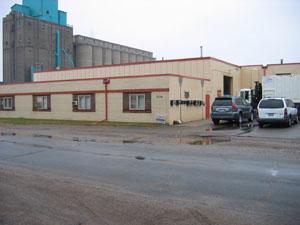 Whittaker Corp.The 7.5-acre Whittaker Corp. Superfund site is located in Hennepin County, Minnesota. Beginning in the 1940s, a number of industrial and manufacturing companies operated at the site. During World War II, the site operated as a packaging facility for war materials, including antifreeze and oil for the military. In the 1950s, operations expanded to include industrial coatings production and steel distribution. Site operators stored chemicals in aboveground and underground tanks on site and industrial processes generated a variety of wastes. Site operations and waste handling practices resulted in soil and groundwater contamination at the site. In 1984, EPA added the site to the Superfund program’s National Priorities List (NPL). EPA, the State and the site’s potentially responsible parties (PRPs) worked to take special precautionary measures during the cleanup to allow on-site businesses to remain in operation. Cleanup activities included soil removal, removal of drums and tanks as well as extraction of groundwater. EPA deleted the site from the NPL in 1999 after groundwater contaminants reached cleanup goals. Today, a variety of commercial and industrial businesses continue operations at the site.
Whittaker Corp.The 7.5-acre Whittaker Corp. Superfund site is located in Hennepin County, Minnesota. Beginning in the 1940s, a number of industrial and manufacturing companies operated at the site. During World War II, the site operated as a packaging facility for war materials, including antifreeze and oil for the military. In the 1950s, operations expanded to include industrial coatings production and steel distribution. Site operators stored chemicals in aboveground and underground tanks on site and industrial processes generated a variety of wastes. Site operations and waste handling practices resulted in soil and groundwater contamination at the site. In 1984, EPA added the site to the Superfund program’s National Priorities List (NPL). EPA, the State and the site’s potentially responsible parties (PRPs) worked to take special precautionary measures during the cleanup to allow on-site businesses to remain in operation. Cleanup activities included soil removal, removal of drums and tanks as well as extraction of groundwater. EPA deleted the site from the NPL in 1999 after groundwater contaminants reached cleanup goals. Today, a variety of commercial and industrial businesses continue operations at the site.
For more information:
